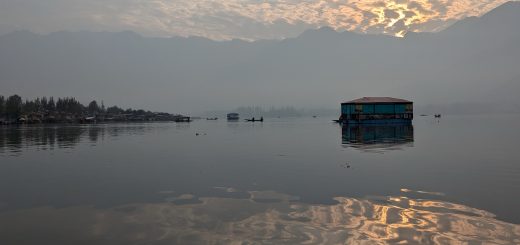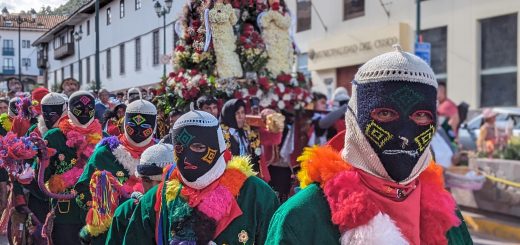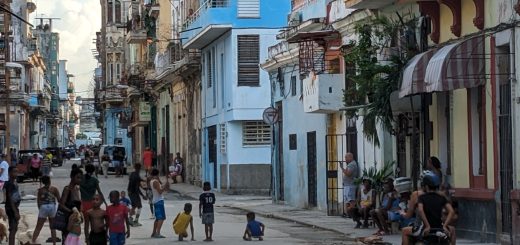Bariloche to La Caleta Tortel: A One-month Patagonia Road Trip Itinerary

Our trip to Patagonia was a bit spontaneous, which was probably part of the reason we were so amazed with everything we experienced. Our initial “plan” was to rent a car in Bariloche in northern Patagonia for three weeks and take route 40 (which connects Argentina from north to south) all the way down to the south of Patagonia to see the Perito Moreno Glacier and visit the most emblematic trekking town – El Chalten. The whole trip would have been at least 3,000km. We soon realized three weeks weren’t going to be enough, so we extended our rental to a full month.
Our first week in Patagonia was laid back but with a sense that we couldn’t linger in a place if we wanted to get all the way to El Chalten. We evaluated our options, and had to make some choices that seemed like sacrifices at first, but helped us tailor an itinerary more suitable for our family: We scrapped the idea of going to El Chalten and Calafate. We chose to move through Carretera Austral in Chile rather than using Route 40 in Argentina, as the former is richer in nature and better maintained. We ended up going all the way down to Caleta Tortel, almost as far as you can go by car in the south of Chile and followed an itinerary that we can fully recommend as one option (among several of course) if you’re considering a road trip in Patagonia.
During our one-month visit we enjoyed amazing sights but our journey covered only a small portion of Patagonia. We probably missed some of the most touristic spots in favor of uncovering more under-the-radar areas, which is a choice more aligned with our style of traveling. We stayed in 17 different places over the 31-day trip, something we didn’t realize was going to happen. Almost every day was a big day, and it was non-stop for most of the trip. At the end we were exhausted and spent a few days in a beautiful cabin close to Los Alerces National Park to recharge and reflected on a journey well-lived.
There are hundreds of itinerary options for a month in Patagonia. No matter where you go it will surely be an unforgettable and wonderful experience. This is what we did, what we didn’t do, and why.
Our final itinerary
We started in Bariloche (Argentina) which could be considered the gateway to Patagonia. From there we headed south to the cool town of El Bolson, which has a nice vibe, an artisan market, a few breweries, cafes, and more importantly a ton of hikes nearby. From there we continued south by way of Los Alerces National Park to the town of Esquel, a bigger town with easy access to the Chilean border. We then crossed into Chile via Futaleufu, and connected with the Carretera Austral all the way down to Caleta Tortel, just short of the end of the route, and then went back to Bariloche using mostly the same roads but stopping in slightly different places to add variety.
By the way, if you’d like more detail on our route and the stops we made during our Patagonia road-trip, check out our posts covering the Argentina and Chile sections of the journey.
Carretera Austral is known as one of the most scenic routes in the world. We could go as far as we wanted, and then have the option of returning via Chile or Argentina. As we moved on the Carretera Austral we fell in love more and more with the landscapes. Heading south, the region became more isolated, the landscapes more dramatic and the adventure more exciting. We couldn’t help but keep going farther and farther until we reached the magical town of Caleta Tortel. Carretera Austral set the bar too high to come back any other way. On the way north we retraced many of our steps, staying in different towns and spending more time in places that we found worth more exploration. This also gave us the chance to appreciate a few views we couldn’t fully experience due to fog on the way down.
The map below shows our overall itinerary, with purple representing the places we stayed on our way south, and orange for our stops on our way back north.
If you’d care to learn more about our one-month Patagonia road-trip, we go into greater detail in the following posts:
Argentinian Patagonia: A Small Piece of Heaven
Carretera Austral: On the Heels of Autumn
Flights, car rental, and road conditions
We flew from Buenos Aires to Bariloche. In Bariloche we rented a car through Hertz. We had a great experience communicating with them through WhatsApp prior our travels for any consultation or change. Their main office is in the city, which is a short cab ride from the airport. At the time of our travels, renting a car in Argentina was way cheaper than doing so on the Chilean side (and also it was aligned with our travel plans).
Although we are aware of some buses connecting main cities on the summer time, it does not seem to be a common option to move in the Patagonia over long distances. We rented an economy sedan car and we were okay in our itinerary in March and early April. However, a SUV would allow more flexibility if you were to take a different route (for example Route 40). Some roads are closed in late autum and winter, or require the use of wheel chains.
If you want to make the best of a road trip in the Patagonia region, you will likely cross between Chile and Argentina at some point. If you are renting a car, you need to make sure you add the border crossing to your booking. The rental will issue a document you’ll need to show at the immigration offices where you cross.
We crossed Argentina-Chile, and then Chile-Argentina through the Futaleufú border. On the Argentinian side there are about 40 kilometers of unpaved road as you approach the border. When we were driving it was raining, and our car skidded a couple of times. In general, as of 2024 the road was not in great shape but doable with a regular car.
Carretera Austral in Chile is mostly paved until Coyhaique, except for a section in the Quelat National Park, where the road is in poor condition.
Places we didn’t go
Calafate and Chalten: These towns were among our list of priorities for the gap year – the landscapes are apparently too beautiful to be missed. To avoid too many flights, our idea was to drive there from Bariloche. Once in the region, we realized a few things: 1) driving for 20 or so days, covering a large stretch of scrublands along the way to see one place didn’t seem fun – we would be missing the magic and spirit of a road trip; 2) El Chalten is the trekking capital of Argentina. Our toddler is passing the weight limit to be carried in the backpack and not ready yet to embark on hikes on her own, which is a limitation for any serious hike; 3) this year it snowed early in the season. To keep our luggage manageable, we were not equipped for seriously cold weather; 4) There are sections of Ruta 40 that are poorly maintained, and we didn’t 100 percent trust the power of our small rental car.
Finally, we loved Argentina and the prospect of visiting these exciting towns will give us a reason to come back, perhaps when our daughter is old enough to embark on some serious hikes with us.
Ushuaia: The southernmost city in the continent. Although undoubtedly a place of amazing beauty, we had a couple of silly reasons to not visit it: it’s cold and windy, and required us to take an extra flight (something we are trying to avoid).
Ruta 40 south of Esquel: Although ruta 40 is the most emblematic road in Argentina, we opted for its Chilean counterpart to head south in the Patagonia region. The roads are separated by the Andes Mountain, which creates a humid ecosystem with forests to the west in Chile, and a dry valley to the east in Argentina. For us, the landscapes in Chile were more interesting, worth visiting on the way south and re-visiting on our way north. Through Chile there are more towns and services on the road which facilitated our drive.
Northern section of the Carretera Austral: This includes the towns of Puerto Montt, Hornopiren and other beautiful places in Chile. We prioritized the south and more remote regions, and although we could have covered it on our way back, we were just too exhausted to add more stops to our itinerary.
Seven Lakes Circuit: This is a beautiful section north of Bariloche and near the town of Villa La Angostura, which only covers 110km. Undoubtedly beautiful, by the time we went back to Bariloche we felt we had gotten our fair share of lakes on our trip.
The above are just few of the key places we missed, but you would need months or years to cover such a vast region. We are happy with our choices, and there is more to discover on a future trip!
For more detail on this road trip please read about our experiences in the Argentinian and Chilean sides of Patagonia.



